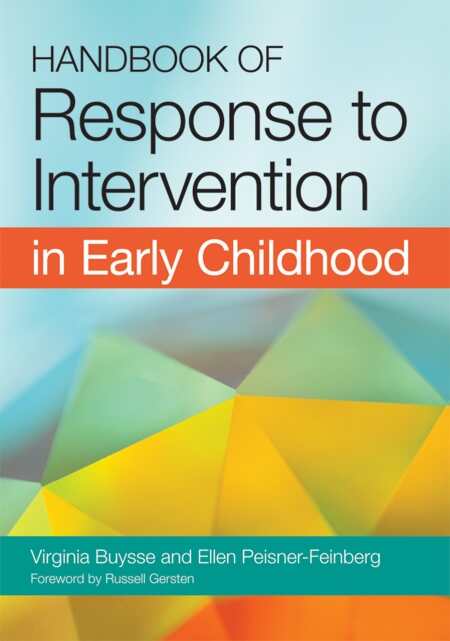Handbook of Response to Intervention in Early Childhood
This well-researched collection of twenty-nine academic essays details a range of issues related to Response to Intervention (RTI) in early childhood education, a strategy employed to screen, support, and assess students in need of assistance. An alternative to the “wait-to-fail” model, where students receive special education assistance only after experiencing difficulties, RTI is a more proactive means of getting children needed support.
RTI for early childhood education proposes a three-tiered approach. For example, contributors explore how to use RTI to correct behavioral problems by encouraging early intervention when significant changes can be made, which the authors argue becomes more difficult as students mature. Tiers in the behavioral category involve whole-school, universal support for all students (Tier 1); those not responding to Tier 1 supports move to Tier 2, such as small groups; and, if needed, individualized support (Tier 3).
All essays follow this tiered approach of RTI and call for early intervention to improve the quality of education for children with learning difficulties and behavioral challenges, as well as dual-language students. While RTI has been used with K-12 students and is proven to be effective, the authors document how it is still emerging for use in early childhood education. The articles explain how best to apply pre-K level RTI, with the ultimate goal of additional research to determine how effective it is among the younger age group.
Another common theme stresses the need for educators to collaborate with parents and specialists to create an RTI plan that promotes a “classroom as community” environment. Suggestions include understanding students’ individual personal challenges, respecting diverse backgrounds, and involving students in establishing classroom rules.
A few chapters offer specific techniques for managing the classroom environment, including addressing exclusionary social practices among students, and techniques for helping students understand plot and theme in texts, which would be useful to teachers as well.
The academic, research-based focus of the Handbook of Response to Intervention in Early Childhood will appeal primarily to other early education scholars. From a practical standpoint, however, it may be difficult to achieve broad implementation. Since the first step of RTI calls for universal, whole-school screening, RTI needs strong support from school administrators. As a result, the secondary target audience for the handbook is limited mostly to those who make decisions and obtain resources for the entire school.
Still, many of the techniques discussed are instructive for all educators, as they can be applied within the classroom on a small scale to provide a more supportive learning environment.
Reviewed by
Maria Siano
Disclosure: This article is not an endorsement, but a review. The publisher of this book provided free copies of the book and paid a small fee to have their book reviewed by a professional reviewer. Foreword Reviews and Clarion Reviews make no guarantee that the publisher will receive a positive review. Foreword Magazine, Inc. is disclosing this in accordance with the Federal Trade Commission’s 16 CFR, Part 255.

